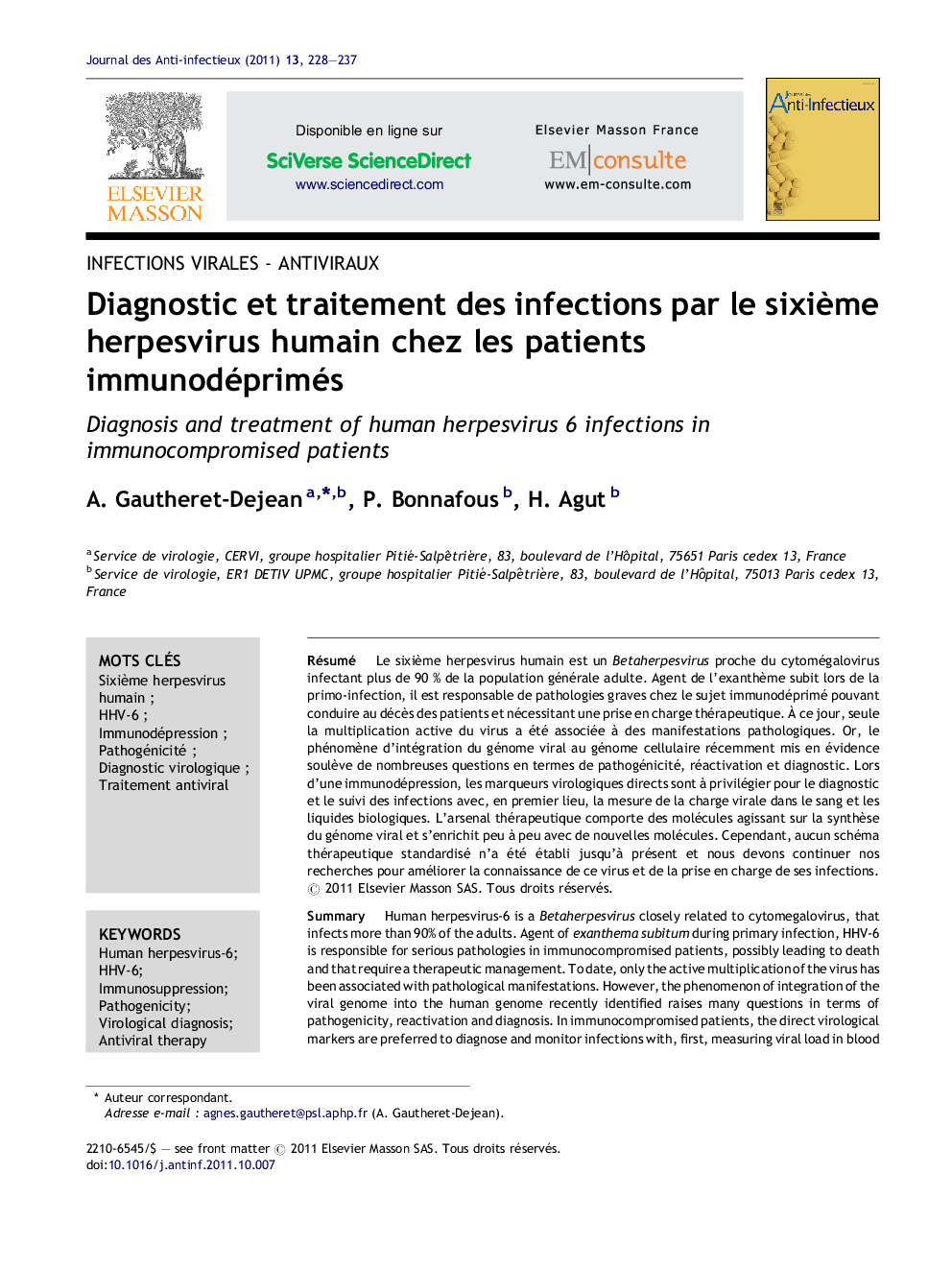| Article ID | Journal | Published Year | Pages | File Type |
|---|---|---|---|---|
| 3405522 | Journal des Anti-infectieux | 2011 | 10 Pages |
Abstract
Human herpesvirus-6 is a Betaherpesvirus closely related to cytomegalovirus, that infects more than 90% of the adults. Agent of exanthema subitum during primary infection, HHV-6 is responsible for serious pathologies in immunocompromised patients, possibly leading to death and that require a therapeutic management. To date, only the active multiplication of the virus has been associated with pathological manifestations. However, the phenomenon of integration of the viral genome into the human genome recently identified raises many questions in terms of pathogenicity, reactivation and diagnosis. In immunocompromised patients, the direct virological markers are preferred to diagnose and monitor infections with, first, measuring viral load in blood and body fluids. The therapeutic arsenal includes molecules acting on the synthesis of the viral genome and enriched gradually with new molecules. However, no standardized regimen has been established so far and we must continue our research to improve understanding of this virus and support of its infections.
Keywords
Related Topics
Health Sciences
Medicine and Dentistry
Infectious Diseases
Authors
A. Gautheret-Dejean, P. Bonnafous, H. Agut,
